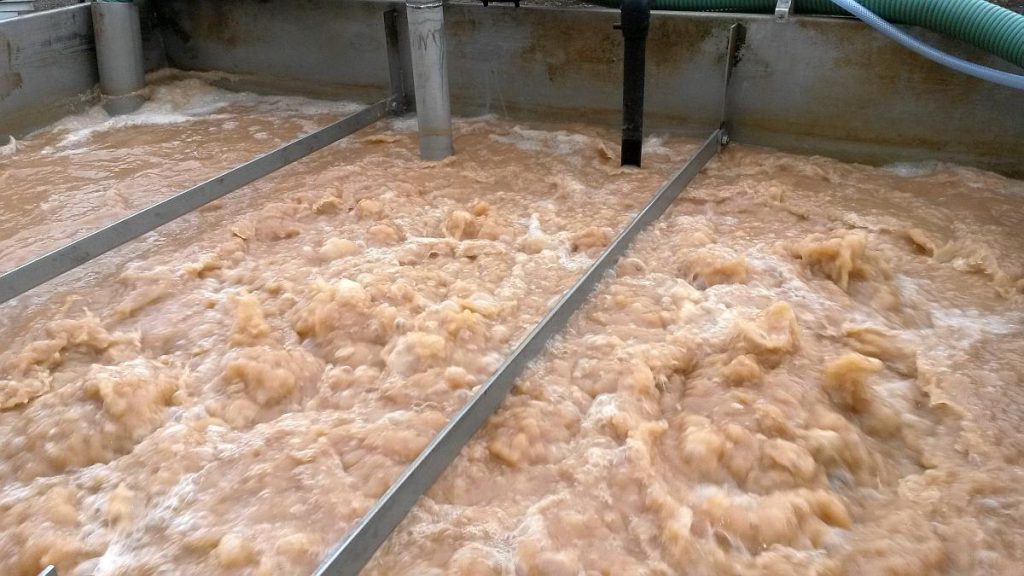Pros & Cons - Moving Bed Bioreactor Technology

A moving bed bioreactor is a biological sewage treatment process. In many instances, wastewater is full of organic matter that can be difficult to filter out by physical or chemical means. Thus, one of the best methods of dealing with organic matter is treating it with a biological process. The basic idea behind biological water treatment processes is using micro-organisms to break down sewage.
The media that carries out decomposition can be implemented in a number of ways. One of the most common is the activated sludge process, a type of suspended growth system that utilizes a loose sludge solution that is aerated to aid in the metabolic breakdown.
Another method is a trickling filter, a fixed film system that sprays the sewage on top of a bed of stones that are covered in a biofilm.
Both activated sludge and trickling filters have their advantages and are effective processes, but they also have certain disadvantages.
However, a moving bed bioreactor (MBBR) is a biological process that utilizes aspects of each of these systems and the associated benefits without their disadvantages. This process uses a biofilm that is attached to a carrier like the trickling filter, but the carriers are suspended in the solution with aeration bubbles like the activated sludge process.
Below, we’ll describe the pros and cons of an moving bed bioreactor system (MBBR) in wastewater treatment.
Pros
Higher effective sludge retention time (SRT)
Sludge retention time is effectively the length of time that a particular unit of biological media is actively working within the bioreactor.
As a fixed film system, the SRT of MBBR is much longer than that of a suspended growth system where the bio media can be pulled from the reactor at the outlet. Such systems require a recirculation line for the sludge. In the moving bed bioreactor process, the plastic carriers are kept within the reactor by a mesh sieve at the outlet, so none of the biofilm is lost.
Lower hydraulic retention time (HRT)
Hydraulic retention time refers to the amount of time the bioreactor needs to effectively treat the waste water influent. Thanks to the combination of the moving carriers with the highly concentrated biofilm, HRT is shorter for these moving bed bioreactor systems when compared to others, typically only needing a few hours at maximum based on organic load.
Responds to load fluctuations without operator intervention
Many other treatment methods, biological or otherwise, need to be diligently monitored for load fluctuations so that dosages may be adjusted accordingly. WIth MBBR, this is unnecessary for fluctuations that aren’t considerably large.
The biofilm is naturally able to self adjust slightly to accommodate for different volumes, concentrations, or contaminants.
Lower sludge production
One of the biggest issue when dealing with wastewater is the resulting sludge after certain processes. Biological systems are no different. However, because MBBR is a fixed film system, nothing is being added to the effluent so the produced sludge volume is smaller than in additive biological processes.
Less area required
Thanks to the large inner surface area of the plastic carriers and the high bacterial concentration of the biofilm, moving bed bioreactor units are more compact and occupy less land area than other biological treatment systems.
Resilient to toxic shock
In a similar vein to its response to load fluctuations, MBBR systems are also resilient against toxic shock, which is an issue with other biological treatments. Some contaminants in wastewater can kill the bacteria in the biological media, but MBBR biofilms can respond and recover from such toxins.
Process performance independent of the secondary clarifier
Activated sludge systems use recirculated sludge to increase their SRT. However, if there are issues in the separation that occurs in the clarifier, the return sludge can be of lower quality and affect the performance of the reactor.
This is not an issue in MBBR systems because there is no need for recirculation being that it is a fixed film system.
Improved settling characteristics
How well the reactor effluent settles in the clarifying tank can affect the quality of the treated water.
This can be an issue in certain other biological treatment systems, but MBBR systems and their combined fixed film and suspended media qualities ensure that the solids settle out well, with little to no turbidity in the supernatant and low water content in the sludge.
Cons
Manual bacterial monitoring required
Biological systems are more difficult to monitor than other treatments. You cannot simply put a sensor in the tank to consistently keep track of the bacteria in the bio media. Operators have to regularly take samples of the media and analyze them in a lab by hand to ensure that the bacteria are alive and healthy.
Skilled operator needed
In order to monitor the bio media, the operators need to be experts in biological water treatment. The physical operation of these systems are not particularly complex, but the biological processes that occur are complex and require some skilled staff to ensure they are working properly.
MBBR treatment systems combine some of the best qualities of the activated sludge process and trickling filters without their disadvantages, but it is not without a few of its own. But, in instances and applications, the benefits can outweigh the negatives.
Do you want to learn more about the pros and cons of the moving bed bioreactor technology and how this technology could apply to your wastewater treatment application?
Contact Genesis Water Technologies, Inc., your water & wastewater treatment specialist at 1-877-267-3699 in the USA, reach out to our local offices and partners around the world or contact us at customersupport@genesiswatertech.com to speak with one of our knowledgeable representatives.

